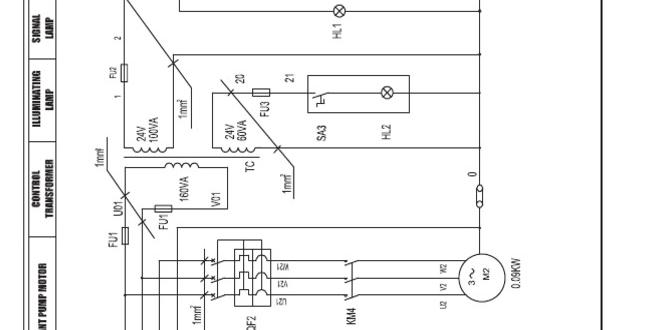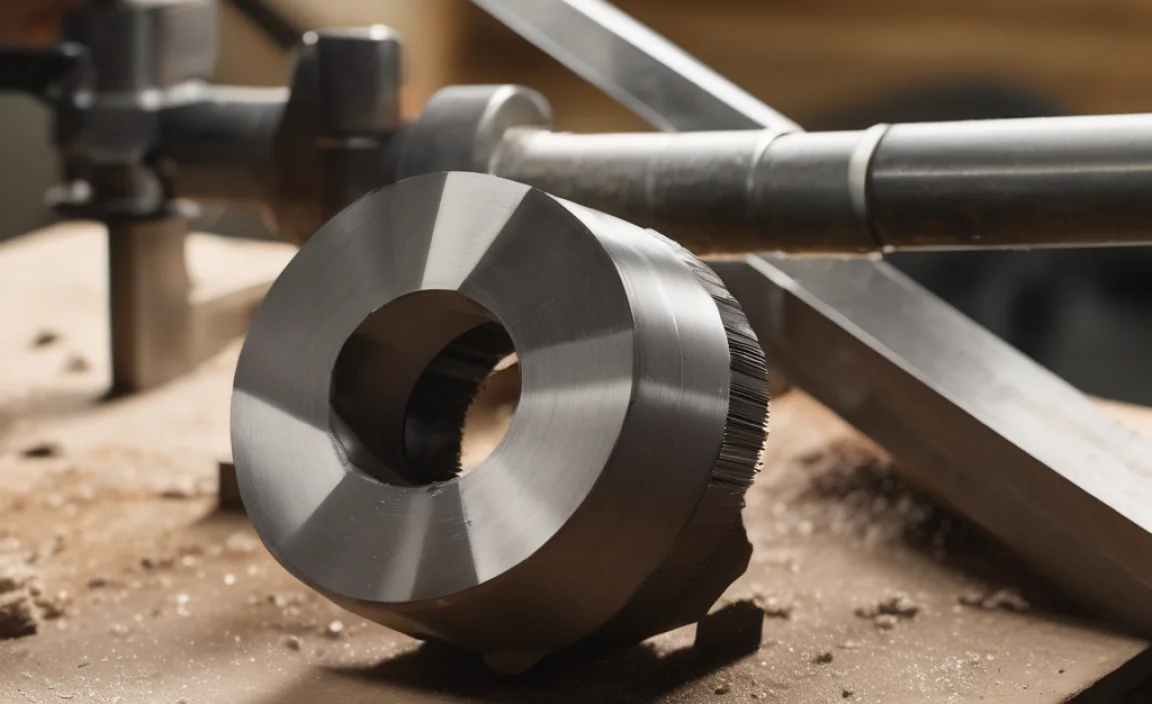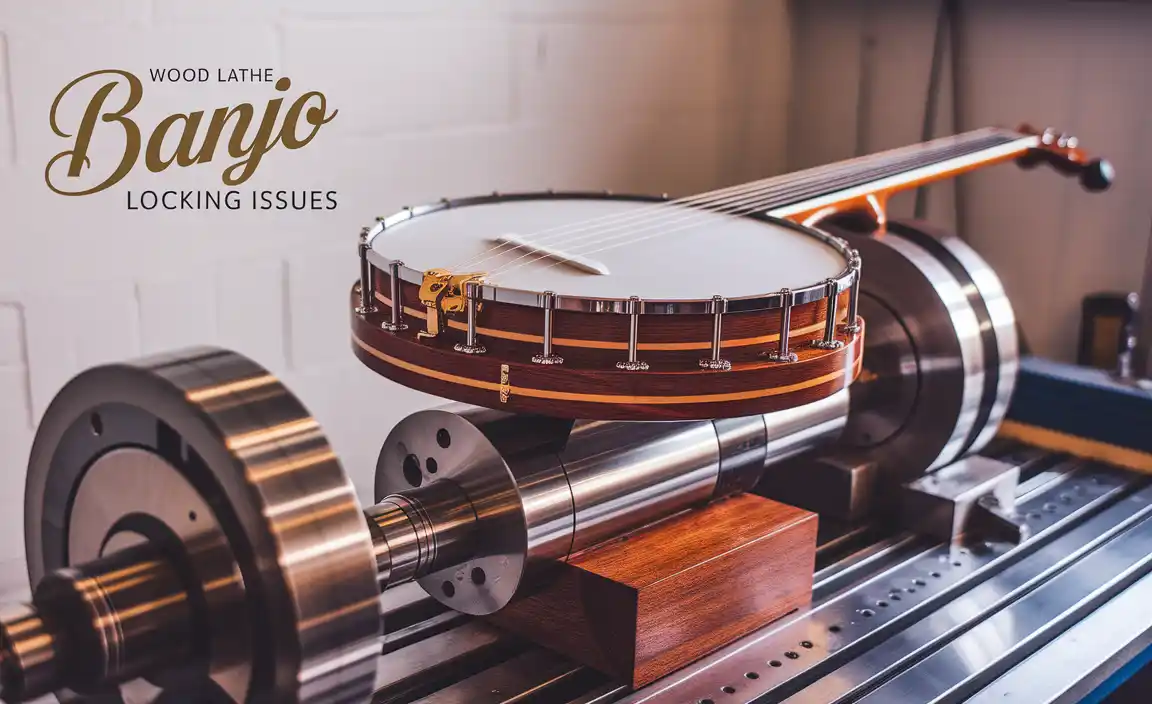Quick Summary
For precise helical interpolation, especially in tough materials like stainless steel, the 45-degree TiAlN ball nose end mill is your go-to tool. Its specific geometry and coating ensure smooth, controlled cutting paths, preventing tool breakage and delivering superior surface finish in challenging applications.
Hey there, machinists and makers! Daniel Bates here from Lathe Hub. Ever tried to create a smooth, curved hole or a sweeping fillet on your CNC machine and run into some frustrating chatter or even a broken tool? It’s a common hurdle, especially when working with harder metals. The good news is, the right tool makes all the difference. Today, we’re diving deep into a specific hero of the milling world: the 45-degree TiAlN ball nose end mill and why it’s absolutely essential for mastering helical interpolation. Get ready to unlock smoother cuts and better finishes!
Unlocking Smooth Curves: The Magic of Helical Interpolation
So, what exactly is helical interpolation? Think of it as a sophisticated way to create holes or pockets on your CNC machine. Instead of just plunging straight down, the tool follows a spiral or helical path. This is super useful for creating precise diameters, widening existing holes, or generating internal threads and complex shapes. It distributes the cutting load evenly, which is a big deal for tool life and surface quality, especially when you’re dealing with materials that can be a bit stubborn, like stainless steel.
This method has a few key advantages:
- Reduced Cutting Forces: By spiraling down, the tool engages less material at any given moment, leading to lower forces on the tool and workpiece.
- Better Chip Evacuation: The helical path helps chips move away from the cutting zone more effectively, reducing the risk of re-cutting chips and tool breakage.
- Improved Surface Finish: Smoother engagement and less chatter mean you get a nicer finish on your parts.
- Increased Tool Life: When the tool is happy and not fighting excessive forces, it lasts longer.
However, achieving these benefits isn’t just about the machine program. The cutting tool itself plays a critical role. And for helical interpolation, especially in demanding materials, one type of tool stands out: the 45-degree TiAlN ball nose end mill.
The Star of the Show: The 45-Degree TiAlN Ball Nose End Mill
Let’s break down what makes this tool so special for helical interpolation.
What is a Ball Nose End Mill?
A ball nose end mill, sometimes called a round nose end mill, has a tip shaped like the end of a ball. This fully rounded tip means it’s capable of cutting in any direction without leaving a sharp corner on the bottom of its cut. This makes them perfect for creating rounded internal corners when machining, or for contouring and 3D milling applications where smooth, flowing surfaces are essential.
The Significance of the 45-Degree Angle
Now, why 45 degrees? This is where the geometry gets really clever for helical interpolation. A standard ball nose end mill effectively has a 360-degree cutting edge around its tip. However, when performing helical interpolation, engaging the full circumference of the ball nose can lead to excessive tool pressure and instability, particularly when starting the tool’s path or in tougher materials. The 45-degree angle on this specialized end mill refers to the helix angle of the flutes. This means:
- Controlled Engagement: The 45-degree helix angle provides a more controlled and gradual chip load. It’s not as aggressive as a steeper helix (like 60 degrees) or as flat as a lower helix, striking a nice balance for smooth entry and continuous cutting.
- Optimized for Radial Depth of Cut (RDOC): This angle is often optimized to work best with typical radial depths of cut used in helical interpolation, meaning you get efficient material removal without overloading the tool.
- Effective Chip Evacuation: The specific helix angle helps in directing chips efficiently up the flutes and out of the cutting zone, which is crucial for preventing chip packing and breakage, a common issue in deep pockets or narrow slots.
Think of it like a well-designed ramp – it allows for a smooth transition into the material, minimizing shock and stress.
The Power of TiAlN Coating
TiAlN stands for Titanium Aluminum Nitride. This is a high-performance PVD (Physical Vapor Deposition) coating that forms a hard, protective layer on the surface of the end mill. For helical interpolation, especially in materials like stainless steel, this coating is a game-changer:
- High-Temperature Resistance: Stainless steels are notorious for work hardening and generating a lot of heat during machining. TiAlN coatings are exceptionally good at resisting these high cutting temperatures. They form a ceramic-like barrier that disperses heat, preventing the cutting edge from softening and dulling prematurely.
- Increased Hardness and Wear Resistance: The coating significantly increases the surface hardness of the end mill, making it much more resistant to abrasion and wear. This means the tool stays sharp for longer, which is vital for maintaining dimensional accuracy throughout the cut.
- Reduced Friction: The smooth, hard surface of the TiAlN coating lowers the friction between the tool and the workpiece. This not only helps with heat reduction but also leads to cleaner chip formation and a better surface finish on your parts.
- Excellent for Tough Materials: TiAlN is particularly well-suited for machining materials that are difficult to cut, such as stainless steels (like 304), nickel-based alloys, and hardened steels. This makes the 45-degree TiAlN ball nose end mill a must-have for anyone working with these materials.
Why This Combination is Essential for Stainless Steel 304
Stainless steel, especially grades like 304, presents its own set of machining challenges. It’s known for its toughness, tendency to work-harden rapidly, and low thermal conductivity. These properties mean that heat generated during cutting struggles to dissipate, leading to high tool temperatures and rapid tool wear if inappropriate tools are used.
This is precisely where the 45-degree TiAlN ball nose end mill shines:
- The ball nose geometry allows for smooth, continuous engagement, reducing the stress concentrations that can occur with sharp corners, a common issue when machining stainless steel.
- The 45-degree helix angle provides a balanced chip load, preventing the excessive cutting forces that can cause chatter and tool breakage when cutting the gummier grades of stainless steel.
- The TiAlN coating is the true hero here. It provides the necessary heat resistance and hardness to combat the punishing conditions of machining stainless steel. It protects the cutting edge, allows for higher cutting speeds (when appropriate for the setup), and ensures a consistent cut, leading to a superior surface finish on your 304 stainless parts.
Without this specialized tool, attempting helical interpolation in stainless steel 304 can quickly become a battle against chatter, built-up edge, and premature tool failure. This end mill is engineered to overcome these difficulties.
Key Features to Look For
When you’re shopping for a 45-degree TiAlN ball nose end mill for helical interpolation, here are a few things to keep an eye out for:
Material and Construction
- Solid Carbide: For the best performance and rigidity, especially when machining stainless steel, solid carbide end mills are generally preferred. Carbide holds its edge much better at higher temperatures than high-speed steel (HSS).
- Number of Flutes: For helical interpolation, especially in tougher materials where chip evacuation is paramount, 3-flute or 4-flute end mills are common. A 3-flute can sometimes offer a good balance of rigidity and chip clearance, while a 4-flute can provide more cutting edges and better surface finish in finishing passes. For heavy-duty roughing or when dealing with gummy materials, a 2-flute might even be considered for maximum chip room.
- End Mill Tolerance: Look for manufacturers that specify tight tolerances for diameter and runout. This ensures accuracy and stability during your cuts.
Coating and Geometry Specifics
- TiAlN Coating: Ensure it’s a quality TiAlN or a similar advanced coating like AlTiN (Aluminum Titanium Nitride).
- 45-Degree Helix Angle: This is the key differentiator for helical interpolation.
- Ball Nose Radius: The radius of the ball nose should match the fillets or radii you need to achieve in your part design. Common radii are available, so choose one that fits your application.
- Core Strength: A robust tool core is important for rigidity.
Manufacturer Reputation
Reputable manufacturers often invest more in quality control and advanced geometries. Brands known for high-performance cutting tools are a good bet. You can often find helpful specifications and application notes on their websites.
Setting Up for Success: Do’s and Don’ts of Helical Interpolation
Using your 45-degree TiAlN ball nose end mill effectively involves more than just having the right tool. Proper setup and machining parameters are crucial.
Essential Tools and Setup Checklist:
- The 45-Degree TiAlN Ball Nose End Mill: Of course! Ensure it’s the correct diameter and has the desired ball radius for your operation.
- Rigid Tool Holder: A good quality collet chuck or hydraulic tool holder is essential for minimizing runout and vibration. Avoid run-of-the-mill set screw holders for critical operations like this.
- CNC Machine: A machine with good rigidity and smooth motion control is vital.
- Coolant/Lubrication: Essential for stainless steel. Flood coolant or a high-pressure through-spindle coolant system is recommended.
- Workholding: Ensure your workpiece is securely and rigidly held to prevent movement during the machining process.
- Appropriate Work Material: In our case, we’re focusing on Stainless Steel 304.
The Machining Process: Step-by-Step Guidance
While precise parameters depend on your specific machine, material, and tool, here’s a general workflow:
- Program the Helical Motion: Using your CAM software or G-code programming, define the helical path. This involves specifying the Z-axis feed rate, the XY radius of the helix, and the pitch (vertical distance per revolution). Ensure the entry point is programmed correctly to match the tool diameter and desired hole size.
- Set Speeds and Feeds: This is critical. For stainless steel 304 with a carbide end mill and TiAlN coating, you’ll typically start with conservative values and adjust based on performance. A good starting point for surface speed (SFM) for stainless steel 304 with TiAlN carbide might be around 150-300 SFM (45-90 m/min). Chip load per tooth will vary but aim for something that produces nice, short chips. Always consult manufacturer recommendations if available.
- Program Radial Depth of Cut (RDOC): For helical interpolation, the RDOC is typically a small percentage of the tool’s diameter, often around 10% to 20% of the tool diameter for a semi-finish cut, and even less for a final finishing pass. This smooth engagement is key. Do NOT try to remove large amounts of material radially in one pass.
- Program Axial Depth of Cut (ADOC): The Z-axis feed rate controls the axial depth. This should be set to maintain a consistent chip load throughout the helical plunge.
- Engage Coolant: Turn on your flood or through-spindle coolant before the tool starts cutting. Make sure it’s directed accurately at the cutting zone.
- Verify Tool Path: Perform an air cut (tool runs the program without touching the workpiece) to visually confirm the programmed path and clearances are correct before cutting metal.
- Execute the Cut: Start the machining cycle. Listen to the machine and observe the chip formation.
- Monitor and Adjust: If you hear excessive chatter, see long, stringy chips, or smell burning, stop the program immediately. You may need to adjust your feed rate, spindle speed, or depth of cut.
Do’s and Don’ts:
| Do’s | Don’ts |
|---|---|
| Do use a rigid tool holder. | Don’t use a worn-out or damaged end mill. |
| Do ensure proper coolant application. | Don’t try to take too large of a radial or axial depth of cut. |
| Do listen to your machine for signs of trouble. | Don’t use excessive spindle speeds without proper cooling and lubrication. |
| Do start with conservative speeds and feeds. | Don’t forget to verify your G-code with an air cut. |
| Do ensure your workpiece is securely fixtured. | Don’t re-cut chips; ensure they are being evacuated properly. |
| Do choose the correct ball nose radius for your design. | Don’t neglect the importance of the 45-degree helix angle for this specific application. |
Troubleshooting Common Issues
Even with the best tools, you might encounter a hiccup. Here are some common problems and how to address them:
Chatter or Vibration
Cause: Too high a feed rate per tooth, insufficient rigidity in the setup (tool holder, spindle, workpiece), dull tool, or improper depth of cut.
Solution: Reduce feed rate per tooth, increase spindle speed (ensure cooling is adequate), use a more rigid tool holder, ensure workpiece is securely clamped, or slightly adjust radial or axial depth of cut.
Poor Surface Finish
Cause: Tool wear, insufficient coolant, incorrect speeds/feeds, or built-up edge (BUE) on the tool.
Solution: Use a new or sharp tool, ensure adequate coolant flow, review and adjust speeds/feeds, or consider a coating more suited for gummy materials if BUE is persistent (though TiAlN is generally good).
Tool Breakage
Cause: Excessive cutting forces (too aggressive depth of cut, feed), chip recutting, plunging into a poorly programmed path, or a weak tool holder/spindle. For helical interpolation, this is often a result of trying to remove too much material radially.
Solution: Program a smaller radial depth of cut, ensure effective chip evacuation (may need to adjust helix pitch or a different flute count), double-check G-code for entry points, or use a more rigid setup.
Work Hardening in Stainless Steel
Cause: Insufficient cutting speed or feed, leading to the material hardening as the tool passes over it.
Solution: Ensure you are using adequate cutting speeds and feeds for stainless steel. The key is to keep the cutting edge engaged efficiently and prevent it from rubbing. The TiAlN coating and 45-degree helix help manage this.
Where to Find Authoritative Information
When you’re getting into advanced machining techniques and selecting specialized tooling, it’s always a good idea to consult with reliable sources. For tooling specifications, cutting data, and best practices, I always recommend checking resources from:
- Tool Manufacturers: Many leading end mill manufacturers (like Sandvik Coromant, Iscar, Kennametal, Milwaukee Tool) provide extensive online catalogs, technical datasheets, and cutting data calculators. These are invaluable for determining appropriate speeds and feeds for specific materials and tool geometries. For example, Sandvik Coromant’s cutting data calculator is an excellent tool.
- Machining Handbooks and Textbooks: Classic machining handbooks offer fundamental principles. For example, the Machinery’s Handbook has detailed information on tool geometry, cutting speeds, and machining practices.
- Academic Institutions and Research Papers: Universities with strong manufacturing engineering programs often publish research on cutting tool technology and materials. While this can be advanced, it provides a deep understanding of the underlying principles.
Frequently Asked Questions (FAQ)
What is the primary benefit of using a 45-degree helix angle on a ball nose end mill for helical interpolation?
The 45-degree helix angle is designed to provide a more controlled and stable chip load during the helical cutting motion. This helps prevent excessive cutting forces, reduces chatter, and improves chip evacuation, leading to better tool life and surface finish, especially in tougher materials.
Can I use a standard ball nose end mill (without a 45-degree helix) for helical interpolation?
While it might be possible in very soft materials or for very shallow cuts, it’s







